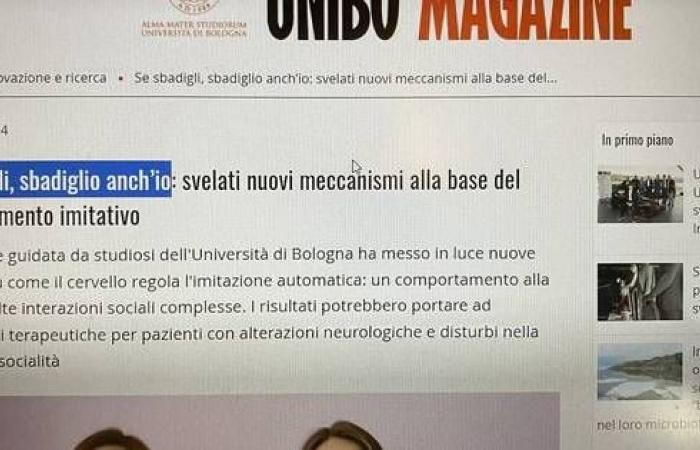
Of
Red.
New mechanisms underlying imitation behaviors revealed. The classic case is that of yawning. If someone in front of us yawns, we yawn too.
The investigation was conducted by scholars of the University of Bologna, Cesena campus, of the Psychology department, coordinated by Professor Alessio Avenanti who has been dealing with neuroscience for years.
The news was reported today by “Unibo magazine”, the house organ of the University of Bologna. “The results – we read in the relevant article published online – could lead to therapeutic applications for patients with neurological alterations and disorders in the social sphere”.
The study – published on Proceedings of the National Academy of Sciences (PNAS) as we read again in the piece in the academic journal – has highlighted new evidence on how the brain regulates this behavior, thus opening new perspectives for clinical and therapeutic applications.
“The results we have obtained open new ways to understand how brain plasticity can be manipulated to increase or reduce imitative behaviors and make people less sensitive to interference during the execution of tasks – Alessio Avenanti, professor at the Department, explains to the Unibo newspaper of Psychology “Renzo Canestrari” of the University of Bologna, who coordinated the study. From here therapeutic applications could arise to improve cognitive performance in patients with neurological alterations and disorders in the social sphere.”
Imitative behavior underlies many complex social interactions and can influence interpersonal relationships, as well as group dynamics. Furthermore, automatic imitation can have negative implications and must often be controlled: for example, to be able to save a penalty, a goalkeeper must inhibit the imitation of the attacker’s movements.
“Automatic imitation is a pervasive behavior in everyday life: we think about when we see someone yawn and immediately feel the urge to do the same, or when we notice our language or facial expressions adapting to those of a friend we are talking to”, he confirms to “Unibo magazine” Sonia Turrini, research fellow at the “Renzo Canestrari” Department of Psychology at the University of Bologna, first author of the study. “Understanding the mechanisms underlying this phenomenon can provide new perspectives on social behavior, which is the context within which most of each of us’s daily lives develop.”
From the same magazine we report the experiment implemented to achieve the results obtained and the protagonists of the research, indicated below.
THE EXPERIMENT
The study involved 80 healthy participants divided into four groups, each undergoing a different ccPAS protocol. Each participant performed two behavioral tasks, before and after treatment using ccPAS: a voluntary imitation task and an automatic imitation task. The goal was to test whether manipulating connectivity between frontal areas – specifically the ventral premotor area (PMv), the supplementary motor area (SMA) and the primary motor cortex (M1) – influences automatic and voluntary imitation.
The results obtained revealed that different circuits of the motor system serve different and dissociable social functions and that the direction of stimulation and the target area differently influence the neuronal circuits involved in imitation.
THE PROTAGONISTS OF THE STUDY
Carried out at the Center for Studies and Research in Cognitive Neuroscience, of the “Renzo Canestrari” Department of Psychology of the University of Bologna (Cesena Campus), the study was published in the journal PNAS with the title “Spike-timing-dependent plasticity induction reveals dissociable supplementary- and premotor-motor pathways to automatic imitation”.
In addition to Alessio Avenanti and Sonia Turrinihave contributed Francesca Fiori, Naomi Bevacqua, Chiara Saracini, Boris Lucero and Matteo Candidi. The research was financed, among others, by the extended partnership in Neuroscience and neuropharmacology of the Pnrr (MNESYS project), by the Bial Foundation and by the Italian Multiple Sclerosis Foundation.





